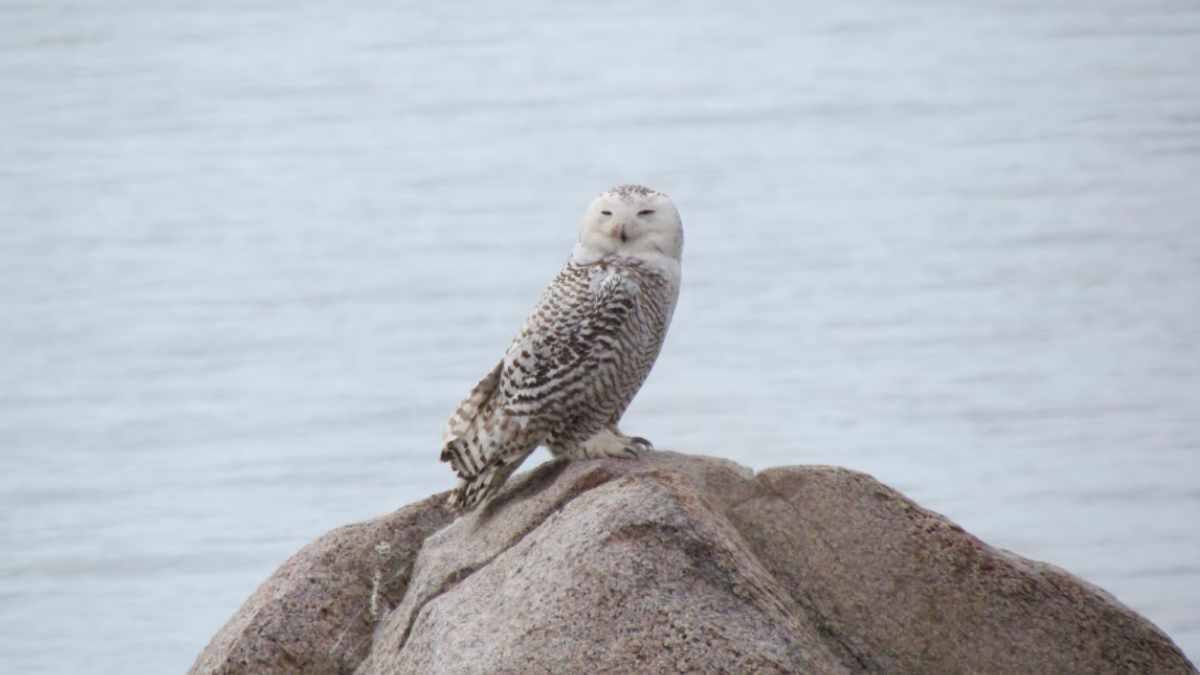
MassWildLife: 'Tis the season to see snowy owls
Why snowy owls are in Massachusetts in the winter
Snowy owls spend most of the year in the cold Arctic tundra, but some snowy owls will spread out to other areas during the winter months. Many snowy owls travel south throughout Canada and into the northern states of the US. You can look for snowy owls in Massachusetts between November and early April.
Snowy owl fluctuations
Seeing a snowy owl can be tricky. Their numbers in Massachusetts can greatly fluctuate from year to year because these owls are an "irruptive" species. This means that if conditions change in their typical range, a large number of them wander and become nomadic. It is during these "irruptions" that increased numbers of snowy owls may winter in Massachusetts.
In other species, irruptions happen when there isn't a lot of food in their typical range, but scientists think the opposite may be true for snowy owls. One theory is that the owls will successfully hatch and raise more chicks in years of food abundance than in years with less food available. With higher densities of owls, food competition increases, causing many owls to travel to find food elsewhere.
Where you can find snowy owls
Snowy owls like areas that resemble their tundra home. In Massachusetts, they like wide open fields and shorelines. Surprising to many, one of the most consistent places to find snowy owls in Massachusetts is around the grasslands and coastal habitats at Logan Airport.
At Logan, there is a long history of Mass Audubon and USDA staff working together to capture, band, and translocate the birds to suitable habitat away from the airport where they pose a risk for collision with aircrafts. In past years, some of these birds have been fitted with satellite transmitters, allowing biologists to learn an extraordinary amount about their annual movements. Learn more about this project at projectsnowstorm.org.
How to watch snowy owls safely
The snowy owls in MA in the winter are often young and inexperienced as they face many challenges. Follow these simple tips to keep both yourself and owls safe while viewing.
-
Give them space—create a buffer zone of at least 150 ft.
The best way to see them is by using binoculars, a spotting scope, or a camera with a telescoping lens. Many cell phone cameras have powerful zoom capabilities that can be used to get a closer look while still maintaining a safe distance.
If you are viewing with a group, make sure to view from one location and don't surround the snowy owl. Never attempt to approach closer to get a better view or photograph. Make sure to keep noise levels down and chatter to a minimum.
-
Watch for behavioral clues
Snowy owls are spending their nights hunting for food and using daytime to rest and conserve energy. If disturbed, they are forced to fly and relocate, causing them to unnecessarily use more energy. If they fly away, extend their necks upright or open their eyes while viewing, you have disturbed it and you should back away immediately. Leave the area completely if the owl continues to show signs of being disturbed.
-
Respect their habitat and landowners.
Because it resembles the tundra, snowy owls are often found in fragile dune habitats on beaches. Respect their habitat by obeying all closures to foot traffic. Always make sure to get the permission of the landowner if you want to view a snowy owl on private property.
-
Keep them wild—don't try to feed them.
Never attempt to feed snowy owls, as it leads them to associate people with food, lowering their fear of humans. This can place them in dangerous situations when they approach other people in search of food.
Fun facts about snowy owls
- Snowy owls have very thick feathers for insulation when they are in the Arctic. These thick feathers cover their entire bodies, including their toes! Because of their heavy feathers, snowy owls can weigh 3.5–6.5 pounds and are North America's heaviest owl.
- Small rodents called lemmings make up the majority a snowy owl's diet in the Arctic. While in Massachusetts, snowy owls eat a wide variety of rodents, songbirds, gulls, waterfowl, and even birds of prey including other species of owls.
- Snowy owls have incredibly keen eyesight and hearing. They have been observed capturing meadow voles that were concealed under 6+ inches of snow. While hovering, they use their acute hearing to triangulate on the target, then plunge into the snow and come up with a vole that was not visible from the surface.
- Females are typically darker and larger than males with dark barring across their primary feathers.
- Each year, a snowy owl nest will have 3–16 eggs. They sit on their eggs as soon as the first egg is laid so their eggs hatch in sequence, rather than all at once. The first chicks to hatch are more likely to survive, especially when food is scarce.
Tags: MassWildlife,















